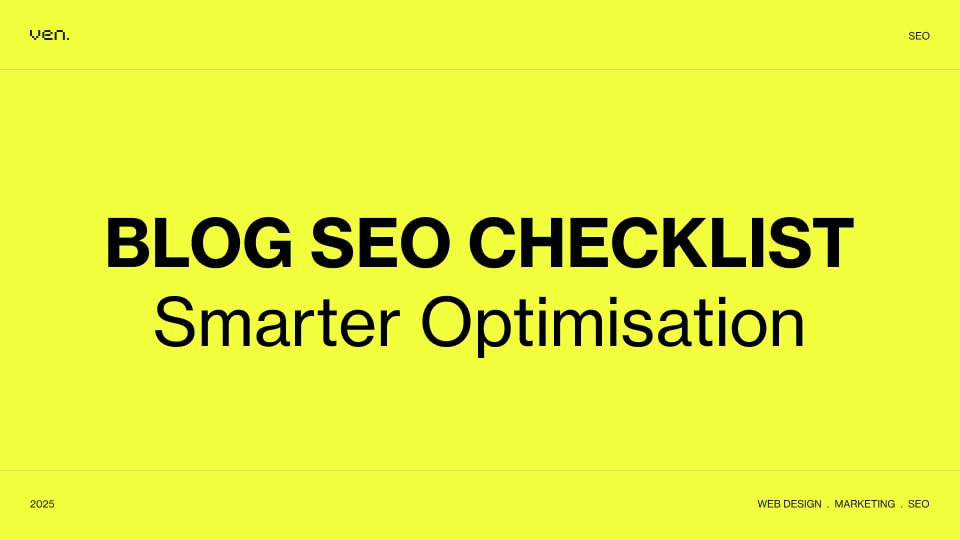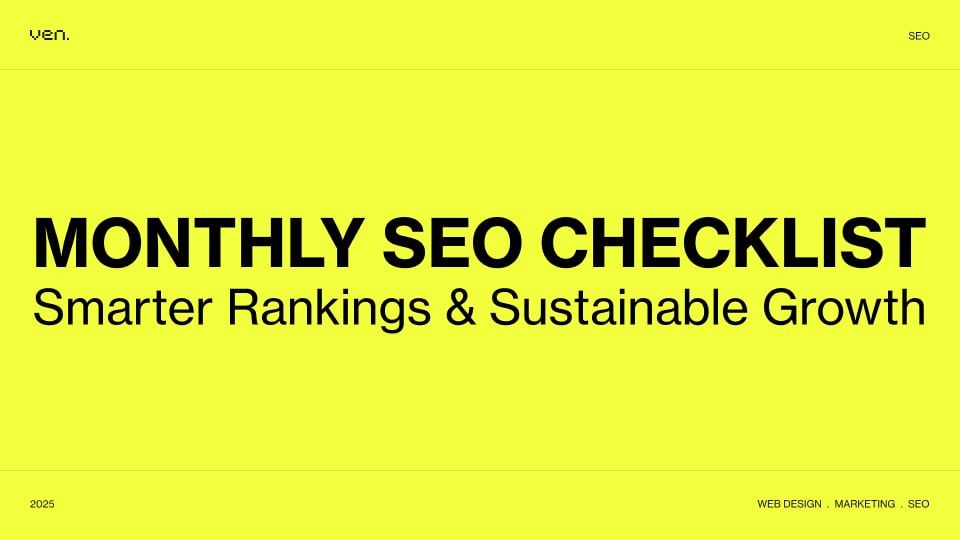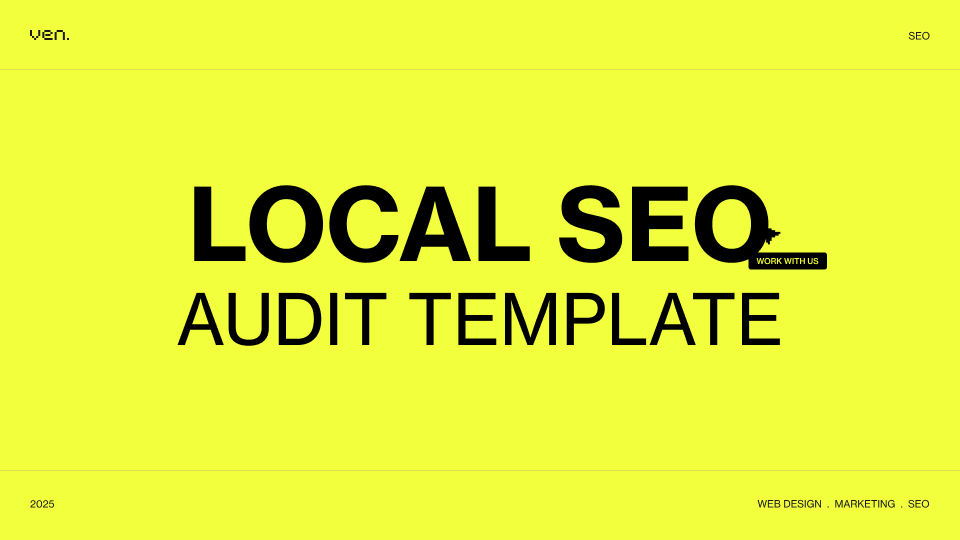If you are an Aussie SMEs owner, this article is for you. We have spent 10 years working with business owners in Australia, helping many businesses succeed with SEO and overall Digital Marketing. In this article, we share the successful strategies we’ve implemented to our clients so that you can apply them, as well as the failures to avoid. Importantly, many of the strategies and tactics in this article are free and still valuable today without costing you anything. Alright, let’s dive in.
Table of Contents
What is SEO and Why It’s Critical for Small Businesses?

SEO, or Search Engine Optimization, is a digital marketing strategy that helps to enhance your website’s online visibility. It not only works on Google but also on other big search engines in Australia like Bing, Yahoo!, etc. When potential customers search for your products or services on these search engines, SEO helps ensure that your website appears at the forefront by improving its ranking. It also encourages customers to visit your site through engaging and relevant content.
Increased Online Visibility
A well-executed SEO strategy can help your online store climb to the first page of search results for relevant keywords. This increased visibility allows you to reach potential customers at all stages of the marketing funnel. One of our successful stories is Death Gin, an Australian gin producer, which now ranks on the first page for all gin-related searches. This high ranking contributed to an impressive 1,100% increase in revenue within just four months.
Cost-Effectiveness Compared to Other Marketing Strategies
Small businesses prioritise SEO over other digital solutions as it requires a much lower budget. To quickly compare SEO with paid media in terms of revenue and cost, please refer to the image below. Initially, investing in SEO may not yield immediate business results, but over the long term, the budget for SEO will stabilise. Based on our experience, with a well-structured investment, SEO will break even by the end of the first year and start generating revenue by the second year. Conversely, with paid media, businesses will need to continuously increase their budget to achieve higher revenue.
Long-Term Growth and Sustainability
SEO is a long-term investment that yields sustainable results over time. Organic ranking is most likely to stay on top of SERP since it does not depend on budget. Optimised content can continue to attract organic traffic for many months or even years after publication. Ongoing investment in SEO leads to more consistent traffic, leads, and sales as time goes on.
Common SEO Challenges Faced by SMEs
Having understood the importance of SEO, let’s take a look at some common challenges faced by small businesses:
Budget Constraint
A limited budget is a problem that small firms frequently encounter. In contrast to larger corporations that possess huge marketing budgets and sufficient resources, small businesses typically function with limited resources. This financial restriction may make it more difficult to purchase the premium services and tools needed for efficient SEO optimisation. But if you apply some critical thinking, you’ll discover that financial constraint isn’t necessarily a barrier. For example, SMEs can operate successfully online without a thousand-page website, and many free or inexpensive SEO tools that can assist with SEO optimization.
Lack of Resources for Content Creation and Website Development
Another huge challenge for small businesses is a lack of manpower. Since these businesses are operated by a small team, it is hard for them to run the website efficiently and create high-quality content at the same time. More specifically, developing and optimising a website might require special technical knowledge that could be outside of the control of a small team. Similarly, it is difficult for your team to create high-quality content without specialised knowledge.
To solve this issue, Ven has developed various methods to create content that is valuable for both users and Google at a reasonable cost. We have implemented this approach very effectively for ourselves and our clients.
Proven SEO Strategies for the Australian Market
Ok, now let’s move on to the SEO strategies that we have successfully implemented for our clients. We hope you can take advantage of our experience.
#1 Keyword & Content Strategy
Keyword research and planning are the backbone of any Search Optimization campaign. It is even more essential for small business websites, as you don’t have many resources to waste. Each page must be planned carefully with a clear intention that fits user search intent seamlessly. Keyword research is also crucial for content creation, which is the most cost-effective strategy to drive organic traffic to your website. However, content creation is not as easy as it used to be, and keyword stuffing no longer works. Let’s see how we perform keyword research and integrate it into content strategy with our real-case study:
- Define Target Audience and Set Goals
Even before building your content strategy, identify who your target audience is. Understanding their background, their needs, and pain points will help you to form a reasonable content plan. A customer persona is a potential tool to help you get into their shoes. The collected information will decide on your writing style and how you deliver the content tailored to the audience’s needs.
Understanding the customer’s needs and wants allows you to deliver what they want, but SEO content needs to be built with purpose. Small businesses need to be clear about what you want to achieve from your target audience. Do you want to build trust and raise awareness with your customers? Or do you want them to take action, like subscribing to your email list or making a purchase? Your purpose will act as a compass for your content strategy.
Deliver what the customer is searching for in a way that also benefits your business. Benefit does not necessarily mean purchase; higher recognition is also a benefit—an intangible one.
- Keyword Research and Content Planning
It’s important to do keyword research and content preparation when you’ve established the goals and gained an idea of your reader’s wants. Starting with the information obtained from the client profile, you might come up with ideas for new content. These ideas must be focused on providing solutions for actual issues as well as speaking to the particular needs of your intended audience.
Do keyword research to support these themes after you’ve compiled a list of possible content ideas. Finding precise keywords that support your concepts and increase the content’s relevancy is the aim. As the cornerstone of an extensive and well-rounded content strategy, never forget to select the topics that will complement one another.
Evaluate search volume and keyword difficulty to choose keywords that align with your SEO strategy, emphasising long-tail keywords with lower competition. Leverage these keywords to uncover additional relevant terms or questions by exploring SEO tool suggestions or sections like People Also Ask on Google.
- Be intentional and write with Purpose
It’s critical to specify the goal and target keywords for every piece of content. Ask yourself: What is the core message of this article? Who is the intended audience? What action should readers take after reading? Addressing these questions will clarify your objectives and guide you in crafting an effective layout. Using headers, bullet points, and other structural features also helps arrange content logically so that readers can quickly find the information they need and it is easier to consume your work.
To add a final touch, tailor your tone of voice to resonate with your target audience. Whether you choose a professional, conversational, or informal tone, ensure that it aligns with your audience’s expectations and preferences. A well-chosen tone will make your content more relatable and effective, fostering a stronger connection with your readers.
- Develop a Content Marketing Calendar Based on Your Goals
After generating content ideas, it’s essential to arrange them into a detailed calendar. A well-structured content calendar allows you to organise your content strategy around specific publishing dates and timelines. By doing so, you maintain a consistent flow of fresh content, which is crucial for staying competitive on Google. Regular updates and constant uploads signal to search engines that your content is current and relevant, helping improve your rankings.
Additionally, a content calendar is invaluable for managing content across multiple platforms. Whether you’re producing original content or curating material, having a clear plan helps ensure that everything is timed perfectly, maximising your reach and engagement across all channels.
- Repurpose Your Content
To reach a larger audience, you need to know how to adapt your content for different information channels. Repurposing isn’t just about reusing; it’s about creatively tailoring content to fit various platforms. For example, you might transform a long article into an infographic or video. Essentially, you don’t need to create new content from scratch; instead, you use existing content and present it in various ways to engage different types of readers.
SEO-driven content hub for Future Advisory
- The Challenge:
Future Advisory was at a crossroads. As a growing financial advisory firm, they knew that to reach more clients and expand their footprint, they needed a stronger online presence. But the question was, how could they stand out in a crowded digital landscape? The answer lay in a well-crafted SEO strategy.
- The Objective:
Among the many goals of this project, one stood out: to build an SEO-driven content hub that would not only attract potential clients but also establish Future Advisory as a trusted authority in the financial services industry.
- The SEO Journey:
We began by diving deep into the world of keywords, uncovering high-value, location-specific terms that resonated with Future Advisory’s target audience. This wasn’t just about finding words; it was about understanding the needs, concerns, and searches of potential clients.
Armed with this insight, we set out to create a content hub—a rich collection of informative articles, blog posts, and resources designed to engage, inform, and convert. Each piece was meticulously crafted, optimised for SEO, and strategically placed to guide visitors on a journey from curiosity to conversion.
- The Results:
The impact was profound. Through a powerful mix of on-page SEO optimizations and a targeted link-building strategy, Future Advisory saw their digital presence transform:
- They began ranking for over 800 organic keywords, a testament to the effectiveness of the strategy.
- The website started drawing 400 uniquely qualified visitors each month—people actively seeking the services Future Advisory offered.
- These visitors weren’t just browsing; they were engaging, leading to a significant increase in inquiries and revenue.
But the story doesn’t end there. With this newfound success, Future Advisory expanded their operations, now thriving in five different locations across two states, with plans to venture into two new states on the horizon. They’ve also secured top search rankings for essential keywords, including those related to XERO Accounting and VCFO services.
- The Takeaway:
The SEO-driven content hub was more than just a collection of articles; it was the foundation of a broader strategy that propelled Future Advisory to new heights. Their journey from a firm seeking visibility to a recognized leader in their field is a story of what’s possible when strategic SEO meets compelling content.
#2 Technical and On-page SEO
- Technical SEO
Think of technical SEO as the backbone of your website, ensuring that search engines can easily crawl, index, and understand your site. It’s the behind-the-scenes magic that transforms a collection of web pages into a well-oiled machine of discovery and ranking.
- Site Speed Optimization: Speed is not just a preference but a necessity. A website that loads quickly delights users and pleases search engines. Streamline your site by compressing images, leveraging browser caching, and minimising code to keep those loading times in check.
- Mobile-Friendliness: With Google’s mobile-first indexing, having a mobile-optimised site is non-negotiable. Ensure your website adapts seamlessly to all devices to capture the growing mobile audience.
- Secure and Accessible Website: HTTPS isn’t just about security; it’s a trust signal to both users and search engines. Make sure your site is secure to enhance both the user experience and rankings.
- XML Sitemaps and Robots.txt: These tools guide search engines through your website. An XML sitemap outlines your site’s structure, while the robots.txt file directs crawlers on what to index or ignore.
- Canonical Tags and Structured Data Markup: Avoid duplicate content issues with canonical tags, and enrich your search visibility with structured data. These elements help search engines understand and display your content more effectively.
- Hreflang Tags and 404 Error Management: For multilingual sites, Hreflang tags ensure users see the correct language version. Efficiently handle 404 errors with 301 redirects to preserve link equity and maintain a positive user experience.
- Website Architecture: A clear URL structure and intuitive layout not only facilitate search engine crawling but also enhance the overall user experience.
- On-Page SEO
While technical SEO sets the stage, on-page SEO is where you make your content shine. It’s about optimising every aspect of your page to ensure it’s relevant, engaging, and easy to understand.
- Keyword Optimisation: Use keywords strategically in titles, headers, and body content to align with what users are searching for. This foundational practice remains crucial for improving page relevance.
- Meta Descriptions and Header Tags: Craft compelling meta descriptions to entice clicks and use header tags to organise content. This structure helps search engines grasp the context and significance of your content.
- Internal Linking and Content Quality: Enhance user experience and SEO by linking to related content within your site. Regularly updated, high-quality content that meets user intent will naturally attract better rankings.
- Image Optimisation and URL Structure: Optimise image alt text and file names for better search visibility, and ensure your URLs are simple, descriptive, and keyword-rich for both users and search engines.
- Social Sharing and Schema Markup: While social sharing buttons don’t directly impact rankings, they can amplify your content’s reach. Implement schema markup to provide search engines with rich data, enhancing your snippets in search results.
- Page Loading Speed: Although primarily a technical factor, elements like image size and embedded content affect loading times, impacting your overall SEO performance.
Technical SEO and on-page SEO might operate in different realms, but they are inherently intertwined. For small businesses, technical SEO lays the groundwork for search engines to access and understand your site, while on-page SEO ensures that content is relevant and engaging once it’s indexed. Without a solid technical foundation, your on-page efforts might struggle to gain traction. Conversely, resolving technical issues can significantly boost the effectiveness of your on-page SEO.
#3 Off-Page SEO Strategies
Off-page SEO encompasses the strategies you employ outside your own website to enhance its search engine rankings and build its reputation. For small or local businesses, this means focusing on activities like earning quality backlinks, engaging with your community on social media, and contributing guest posts to local or industry-related blogs. These efforts are essential because they signal to search engines that your business is credible and relevant. For instance, Google uses backlinks as a key component in its PageRank algorithm to gauge the trustworthiness and authority of your site. Without effective off-page SEO, your local business might struggle to stand out against larger competitors. Therefore, investing in off-page strategies can help you build a stronger online presence, attract more local customers, and boost your search engine visibility.
- Earning Quality Backlinks: Secure links from reputable sites to signal trustworthiness.
- Engaging on Social Media: Use platforms to connect with your community and expand your reach.
- Guest Posting: Contribute to industry or local blogs to gain visibility and drive traffic.
- Video Marketing: Create videos to engage users and increase your brand’s online presence.
- Podcasting: Share insights through podcasts to attract and connect with your audience.
- Influencer Partnerships: Collaborate with local influencers to boost credibility and reach.
#4 Local SEO Strategy
Small and medium-sized businesses are often local enterprises, making local SEO optimization an essential part of building their websites. Local SEO helps your website be found by users in the area, making it easier for them to locate your store. Even if you operate an online business, selecting a specific area and optimising local SEO for that region allows you to reach potential customers and reduce operational costs. It would be impractical if your warehouse is in Australia, yet you’re targeting customers halfway around the globe.
Here are eight actionable strategies to elevate your local SEO efforts:
- Make Your Website Mobile-Friendly: Ensure your site is responsive and easy to navigate on mobile devices, as most local searches are conducted on smartphones.
- Identify Local Keywords: Use tools to find keywords specific to your location and incorporate them into your content to attract local searchers.
- Optimise Meta Titles and Descriptions: Craft compelling meta titles and descriptions with local keywords to improve your visibility in search results.
- Create Local-Focused Pages: Develop dedicated pages targeting specific local keywords to capture searches related to your services or products in your area.
- Claim and Optimise Your Google Business Profile: Set up your profile with accurate information, engaging images, and regular updates to enhance your presence in local search results.
- Encourage Customer Reviews: Request reviews from satisfied customers to boost your credibility and improve your rankings in local search results.
- Build Local Backlinks: Connect with other local businesses or community websites to gain backlinks that increase your site’s authority and local relevance.
- Leverage Social Media: Use social media platforms to engage with your local audience, share valuable content, and drive traffic to your site.
Local SEO Strategy for Megalong Restaurant
- Background:
Megalong Restaurant known for its organic, seasonally inspired cuisine crafted from locally sourced ingredients, Megalong Restaurant needed a digital refresh to align its online presence with its unique offerings. In May 2023, LOT 101 enlisted Ven Agency to revamp their dated websites for Megalong Restaurant, Werriberri, and Megalong Valley Tearooms. The goal was to enhance brand representation, boost booking rates, and elevate their online visibility through targeted local SEO strategies.
- Objectives
Local SEO Enhancement: Develop and implement comprehensive local SEO strategies to elevate online visibility, draw in more visitors, and cement a prominent position in the local market.
- Local SEO Strategy:
- Keyword Optimization: Fine-tuned the websites with relevant local keywords to enhance search engine visibility.
- Content Creation: Produced engaging, locally-focused content to connect with the community and resonate with local searchers.
- Local Citations: Built high-quality local citations to strengthen the restaurant’s online presence and improve local search rankings.
- Outcomes:
The revitalised local SEO efforts significantly boosted the online visibility of Megalong Restaurant and its sister properties. This strategic overhaul attracted a greater influx of visitors from the surrounding areas and solidified their presence in the local market, leading to a notable increase in booking rates and enhanced local engagement.
#5 Ecommerce SEO Strategy
In the bustling world of ecommerce, optimising your website for search engines isn’t just a luxury—it’s a necessity. By investing in SEO, you’re setting the stage for sustained growth, attracting potential customers who are actively searching for the unique products or services you offer. Unlike costly paid advertising that provides short-term results, SEO is a cost-effective, long-term strategy that builds a strong foundation for generating organic traffic and boosting sales over time.
While giants like Amazon and eBay dominate with their vast inventories and transactional ease, they can’t match the personalised touch and niche expertise that small ecommerce businesses can provide. By focusing on creating a bespoke customer experience and establishing your store as an authority in your niche, you can carve out a competitive edge and thrive in the evolving digital landscape.
Here are key elements to elevate your ecommerce SEO strategy:
- Enhance User Experience (UX): Design a user-friendly site with intuitive navigation, clear calls-to-action, and a seamless checkout process. Ensure your site is optimised for mobile devices, as a significant portion of shoppers browse and buy on their phones.
- Leverage Local SEO: If you have a physical store, optimise for local search by claiming and enhancing your Google Business Profile. Encourage and respond to customer reviews to boost your local visibility and attract nearby shoppers.
- Prioritise Website Security: Build trust with both users and search engines by securing your site with SSL certificates, using secure payment gateways, and keeping your software updated. A secure website reassures customers and improves your search rankings.
- Showcase Customer Reviews and Ratings: Actively seek and highlight customer reviews and product ratings. Positive feedback not only enhances your credibility but also improves your visibility in search results.
#6 SEO for Video Channels
In today’s digital age, where video consumption is skyrocketing, ensuring your videos stand out on platforms like YouTube can be a game-changer for your small business. The good news? Ranking your videos doesn’t require complex technical knowledge or gimmicky tactics. Instead, focusing on key elements that the YouTube algorithm favours can make a world of difference.
To climb the ranks on YouTube, start with a clear strategy. Understand the basics of YouTube SEO and tailor your approach to the platform’s unique requirements. This involves selecting a target audience, setting growth goals, and crafting a content plan that resonates with viewers.
YouTube SEO Tips for Small Businesses
- Optimise Video Files: Rename your video files with target keywords to improve discoverability.
- Craft Compelling Titles: Incorporate your main keyword naturally into your video title for better ranking.
- Enhance Descriptions: Write detailed video descriptions using relevant keywords to provide context.
- Tag Wisely: Use popular and relevant keywords in your video tags to connect with a broader audience.
- Categorise Your Content: Place your videos in the appropriate category to help YouTube understand their context.
- Create Custom Thumbnails: Upload eye-catching custom thumbnails to attract clicks and views.
- Add Subtitles: Use SRT files to include subtitles and closed captions, improving accessibility and engagement.
- Utilise Cards and End Screens: Add these features to promote other videos and increase channel viewership.
- Incorporate Hashtags: Use relevant hashtags to boost the reach of your videos.
- Curate Playlists: Organise your content into playlists on related topics to keep viewers engaged and drive traffic.
- Experiment with Length: Test different video lengths to see what resonates best with your audience.
- Leverage Autocomplete: Use YouTube’s autocomplete feature to discover trending keywords for your content.
- Add Timestamps: Include timestamps in your descriptions to enhance user experience and provide easy navigation.
- Include Calls-to-Action: Prompt viewers to like, subscribe, or visit your website through clear calls-to-action in your videos and descriptions.
- Analyse Performance: Regularly review YouTube search analytics to refine your strategy and improve your results.
- Engage with Comments: Optionally, leave a pinned comment on your video to highlight important information or encourage interaction.
SEO isn’t everything, think about your value proposition
While SEO is a vital marketing channel, it’s not the sole driver of your business’s success. To truly stand out, you must start with a strong value proposition. This is more than just a catchy slogan; it’s a statement that defines the unique benefits your product or service offers and why it surpasses competitors. Your value proposition is the core reason customers should choose you over others.

Image Credit: b2binternational.com
Creating a compelling value proposition involves deeply understanding your customers’ needs, pain points, and desires. Tools like the Value Proposition Canvas (VPC), developed by Dr. Alexander Osterwalder, can help you visualise and refine your value. The VPC breaks down into two key areas: the value proposition itself and the customer segment. By aligning your product benefits with what your target market truly needs, you craft a message that resonates and differentiates you from the competition.
Incorporating the VPC into your SEO planning ensures that your strategies are not just about ranking higher but also about delivering real value to your audience. A clear and customer-centric value proposition guides your SEO efforts, making your content more engaging and relevant. This approach not only attracts visitors but also builds lasting relationships by addressing their specific needs. Balancing innovative thinking with a strong value proposition leads to content that not only ranks well but also genuinely benefits your customers.
Conclusion
Mastering SEO is essential for small businesses to rise above the noise and attract their ideal customers. By implementing comprehensive strategies, you ensure that your business not only ranks higher in search results but also stands out with compelling, relevant content. Don’t let your competitors dominate the search landscape. Reach out to Ven Agency today and discover how our expertise can elevate your online presence and drive your business to new heights.





